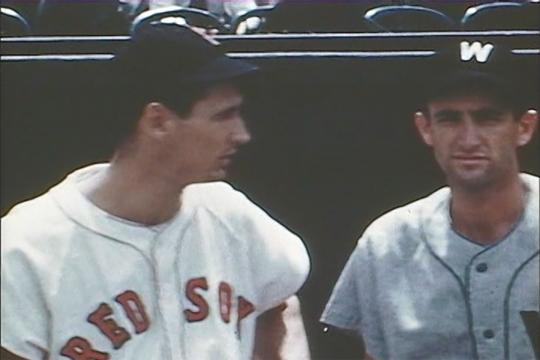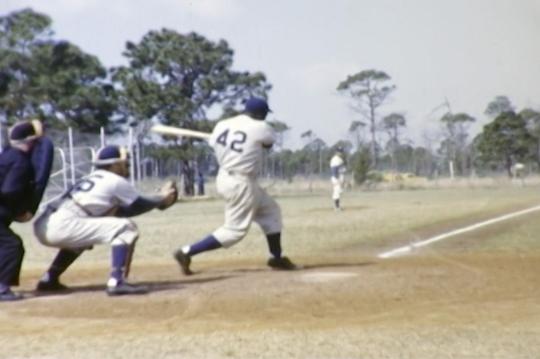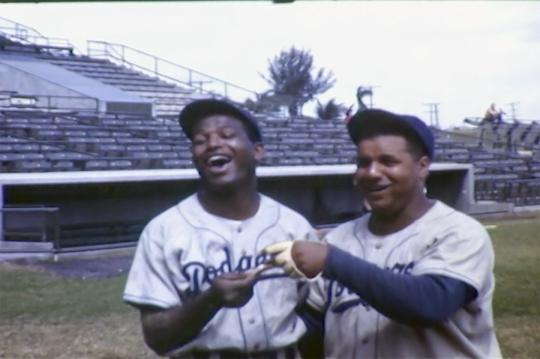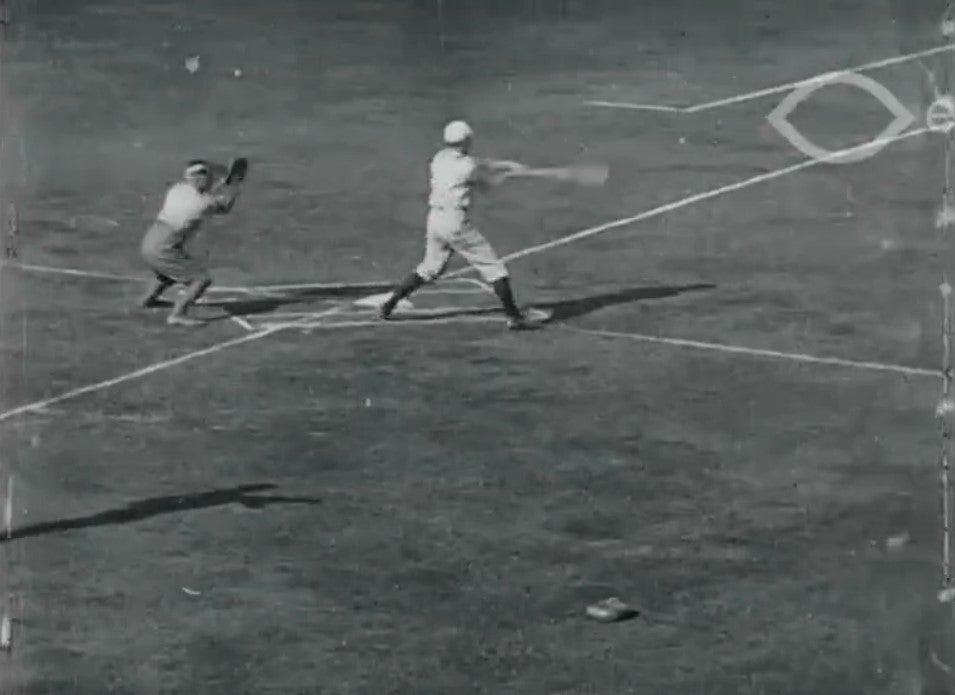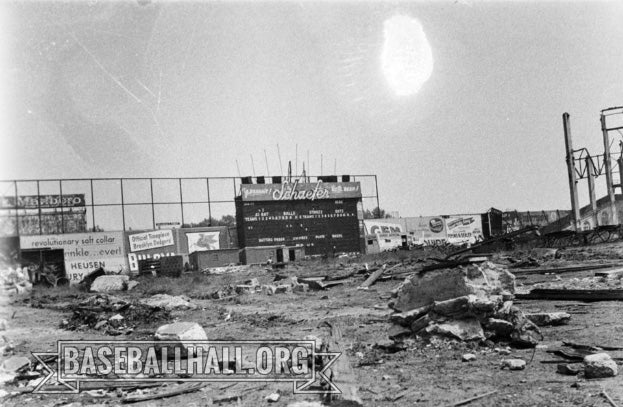- Home
- Our Stories
- Larry Kalas’ donation preserves decades of baseball moments
Larry Kalas’ donation preserves decades of baseball moments
His eyes light up, his countenance transforms and the years seem to fall away when he starts to talk about his maternal grandfather, his dad and his older brother and the memories of their times spent amongst the fans on the Southside of Chicago, rooting for the White Sox at Comiskey.
“My dad and grandfather were both working men who didn’t have a lot of time off to go to games, but they made a point to take us when they could,” Larry Kalas said while sitting in his office in downtown Fort Worth, Texas. “It really was a bonding thing for us and that is what developed into this desire to put this kind of collection together. Over the years, those experiences, and the bonds that were created, prompted me to try to find a way to honor those memories. In particular, I thought about 1959 and the year that the White Sox won the American League pennant.”
Kalas decided to write a book about that season and that team. While doing some research, he came across a film that a family had taken of their trip to Chavez Ravine to watch one of the games of that ’59 World Series between the Los Angeles Dodgers and the White Sox.
Be A Part of Something Greater
There are a few ways our supporters stay involved, from membership and mission support to golf and donor experiences. The greatest moments in baseball history can’t be preserved without your help. Join us today.
“I have always loved history and I try to preserve it in various ways,” Kalas said. “I have an extensive collection of books and materials regarding the various things that I have been involved with in my life. That sort of preservation is important to me. Finding that one film from 1959 sparked an interest in attempting to identify and collect other 16mm, 8mm and Super 8mm films related to people like (us), going to the ballpark with their friends or family and simply taking video of what was happening, the stadium, the crowd and the game action.”
Kalas reached out to the National Baseball Hall of Fame and Museum back in June of 2021 regarding his collection, hoping to find a place where it can not only be preserved, but also made available to fans and researchers and the Museum itself to help tell the story of our National Pastime. The Larry Kalas Film Collection, now a permanent part of the Recorded Media Archives in the Library at the National Baseball Hall of Fame and Museum in Cooperstown, spans film images in those formats from 1921 to the early 1980s. The collection ends at the time when videotape becomes the de facto format for consumer recordings. Kalas made a conscious choice to collect only film.
“Another element of my interest in that medium was the memories of my maternal grandfather,” Kalas said. “He was relentless in taking home movies for 40 or 50 years. Our family collection spans a time before I was born all the way to 1985. So, that sort of informed my collecting.”
The memories of spending time at baseball games, with grandpa, dad, his brother, his friends, was the driving force behind Kalas’ 25-plus years of searching for and collecting these fan-generated films.
The earliest piece of film in this collection is a black and white 16mm film clip from the 1921 World Series at Yankee Stadium between the New York Giants and the Yankees. There is footage from 1938 and the Chicago White Sox running through fielding, batting and throwing drills at a Spring Training site in Pasadena, Calif. There is color film from Municipal Stadium in Cleveland in July of 1953 as the Indians honor Little Leaguers as the youngsters parade around the field. There is an incredible film from June 13, 1948, when a fan in the upper deck of Yankee Stadium captured the moment that Nat Fein took his Pulitzer Prize-winning photograph of Babe Ruth’s final appearance at the Stadium. There are a number of 8mm and 16mm color film clips from Sick’s Stadium in Seattle during the only season of the Seattle Pilots existence in 1969. There are images of Senator Robert F. Kennedy, Kenesaw Mountain Landis, baseball clown Al Schacht, Graham McNamee, animated baseball umpire Emmett Ashford, a very young Vin Scully and countless baseball legends as well as guys that may have only had a “cup of coffee” in the big leagues.
There is film from September of 1937 that shows the construction of the new outfield bleachers, the skeletal construction of the iconic center field scoreboard and the early sprouting of the now famous ivy on the outfield walls in Wrigley Field. There are moving images of long-gone baseball parks such as the Polo Grounds, Ebbets Field, Shibe Park, Navin Field in Detroit, Crosley Field in Cincinnati, County Stadium in Milwaukee and more. There are assorted films shot by fans at All-Star Games, World Series games, Old-Timers Days, Spring Training baseball workouts and exhibition games, and film of fans making their way through various cities to the ballpark of their choice.
The Baseball Hall of Fame’s mission to preserve history, honor excellence and connect generations is embodied not only in this collection, but in the very inspiration for its creation.
“When I found that first film and began to think about others like it, the cornerstone of that collection theory was ‘Why am I doing this?’ My reason was to preserve the history of the game as seen through the eyes of people like me, my grandfather, my friends and the fans so that others can see this history as well,” Kalas said. “When you step through this collection and you see the fans at the game, you see America changing. And it is important to me that others get to see this.”
Kalas began collecting these pieces of film of varying lengths in the late 1990s and then eventually organized them by splicing the shorter films together according to film format onto larger reels, in sequential order. There are over 90 separate reels of film that Kalas donated, and they will forever be preserved in Cooperstown. Eventually, when the funding is secured, these films will be professionally scanned and digitized in order to share this content with generations to come.
“I’m grateful that it will be preserved and seen by current and future fans,” Kalas said. “That’s why I collected it and that’s why I put it together and the rightful place is in the archives at the Hall of Fame and Museum.”
Roger Lansing is the manager of recorded media at the National Baseball Hall of Fame and Museum

